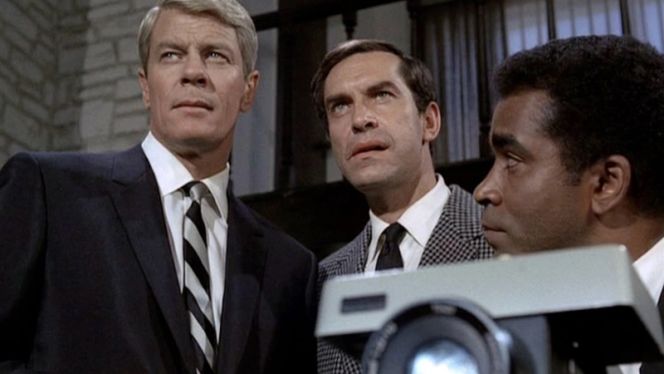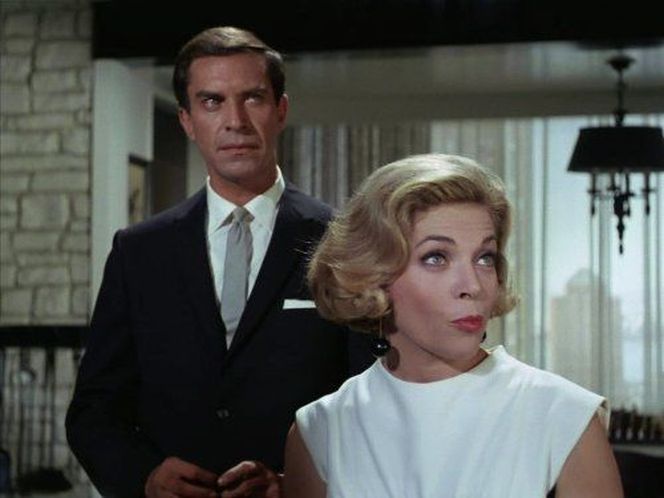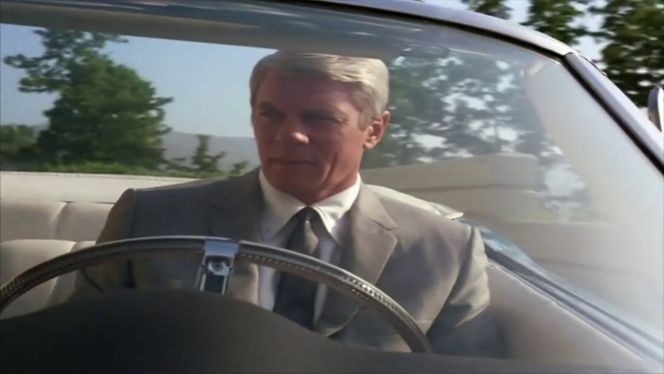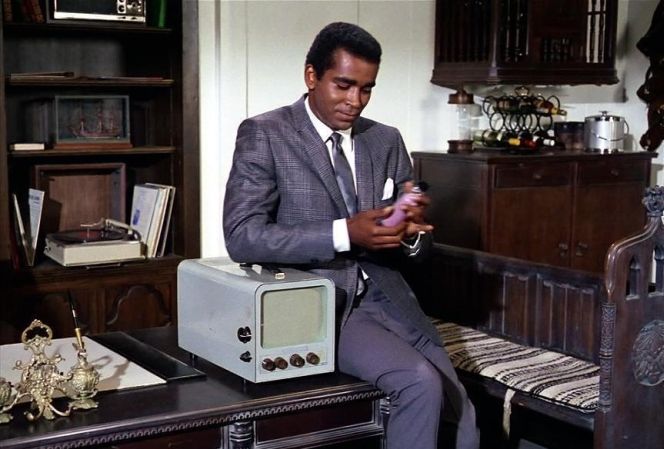RETRO SERIES – Everyone knows the Mission Impossible movies, but few people know that these spectacular action thrillers are based on an old TV series that ran on CBS in America from 1966 to 1973. The series was created by Bruce Geller, who served up weekly adventures of a secret spy agency, the Impossible Missions Force (IMF). With Mission: Impossible 7 premiering yesterday, there’s no better time to look back at the classic television series that formed the basis of this franchise that has been around for more than three decades. So let’s pull up the shades and look back to the misty past where it all began!
Mission Impossible is a TV series that combines the excitement of spy movies with the logic of crime dramas in a unique way. It not only innovated the spy genre, but also the style of crime drama. Week after week, viewers could follow the adventures of IMF agents as they used new tricks to expose their enemies. The quality of the series has also been recognised by the industry, with numerous awards and nominations, including Emmy and Golden Globe awards. The actors and creators of the series also made a name for themselves, and many of them went on to work together on other projects. However, the series was not without its difficulties and changes that affected the story and characters. Let’s take a look at how this legendary TV series, which preceded the films, was born and how it evolved.
The structure and characters of Mission Impossible
The protagonist of the series is Jim Phelps (Peter Graves), the head of the IMF, who at the beginning of each episode is given a recording of his next mission, which he must of course accept or reject. The recording always ends with “this tape will be destroyed in five seconds”. The missions are usually aimed at stopping or exposing some dictator, criminal or enemy agent, and are extremely dangerous and complex. Jim Phelps always selects his best men for the job, including Cinnamon Carter (Barbara Bain), the beautiful and cunning actress, Rollin Hand (Martin Landau), the master disguise and make-up artist, Barney Collier (Greg Morris), the brilliant technician and inventor, and Willy Armitage (Peter Lupus), the strong-handed warrior.
In the first season, Daniel Briggs (Steven Hill) replaced Jim Phelps as IMF director, but he only lasted one season. In the second season, Peter Graves took over the role and remained the face of the series throughout. The other big change came in the third season, when Barbara Bain and Martin Landau left the series. They were replaced at various times by Leonard Nimoy (Paris), Lesley Ann Warren (Dana Lambert) and Sam Elliott (Doug Robert). In the final season, Lynda Day George (Lisa Casey) joined the IMF.
Leonard Nimoy, also known as the iconic Spock from the Star Trek series, played the character “The Great Paris”, a brilliant illusionist and make-up artist, in the third and fourth seasons of the series.
Nimoy joined the series in 1969 when Martin Landau, who played the role of Rollin Hand, left the series. Paris’s role was similar to Hand’s, as both characters were able to pull off perfect disguises and perform ingenious deceptions to help the team on their missions.
Nimoy, however, only stayed on for two seasons, quitting at the beginning of the fifth season. Despite this, the character of The Great Paris remained memorable for fans of the series, and Leonard Nimoy’s performance was a major influence on the series.
In the middle of the Cold War
The series was a real innovation in the 1960s. Not only did Mission: Impossible bring Cold War spy games and technological innovations into the homes of viewers, it also pioneered the television genre with its complex, multi-layered storytelling. The episodes often played with time and space, with various flashbacks and flash-forwards, which kept viewers of the time as engaged as modern series consumers.
The original series was revived in 1988, with a new cast of characters continuing the impossible missions. However, this version failed to match the success of the original series and only survived for two seasons.
Despite the new series, the classic Mission: Impossible has had a lasting impact on pop culture. The phrase “This shot will self-destruct in five seconds”, the recognisable, suspenseful music and the increasingly intense scenes in the tightening frames are all inventions from the original series that have since been incorporated into modern spy films and series.
The Mission: Impossible series is a real time capsule, offering a glimpse into the paranoia and technological optimism of the Cold War era. The style, stories and characters of the series were all influential and continue to influence spy thrillers and action films decades after its debut.
The style and impact of Mission Impossible
The greatest strength of the series was the creative and exciting scripts, full of twists, tricks, disguises and surprises. During the missions, IMF members often used masks, voice impersonation devices, fake documents and other tricks to deceive their opponents. There was not much shooting or chasing, but rather intelligent planning, strategy and psychological manipulation dominated. Mission Impossible’s style was also largely defined by its famous theme song, composed by Lalo Schiffrin, which is still one of the most recognisable TV theme songs to this day.
Mission Impossible was a huge success with critics and audiences alike. Its influence is still felt today, as it inspired not only the Mission Impossible films, but also other spy films and series such as Alias and 24. It was revived in 1988 in a short-lived sequel, with Peter Graves returning as Jim Phelps. Unlike the films, this version remained more faithful to the atmosphere and format of the original series.
Interesting facts about the series
- The series was originally a radio play written by Bruce Geller, but failed to sell. It was later turned into a TV series and bought by Desilu Studios.
- In the series, weapons were almost never used because CBS forbade excessive violence. Therefore, IMF members preferred to solve their problems by other means.
- The Hungarian-born director and producer Reza Badiyi, who has directed more than 20 episodes, was often seen in the series. He also invented the match flame that runs during the main title.
- The series also had a European and Australian theatrical release, Mission: Impossible vs. the Mob, in 1967. It was actually a montage of three episodes.
- The series also had a video game adaptation, which was released in 1990 for Nintendo Entertainment System. It was based on the 1988 sequel and was very difficult.
Availability and rating of the series
The classic Mission Impossible series is a TV cult classic that every spy movie fan should see. The classic series can be seen on Paramount+ in the US. If you love the movies but are not yet familiar with the series, now is the time to dive into the IMF’s exciting and inventive missions. But beware, this article will be destroyed in five seconds! 5, 4, 3…
-BadSector-



















Leave a Reply